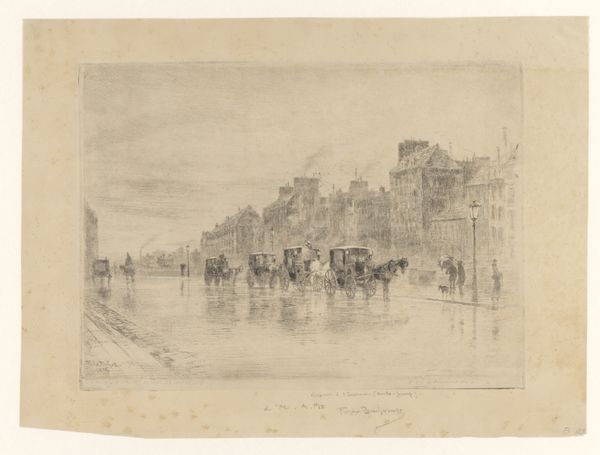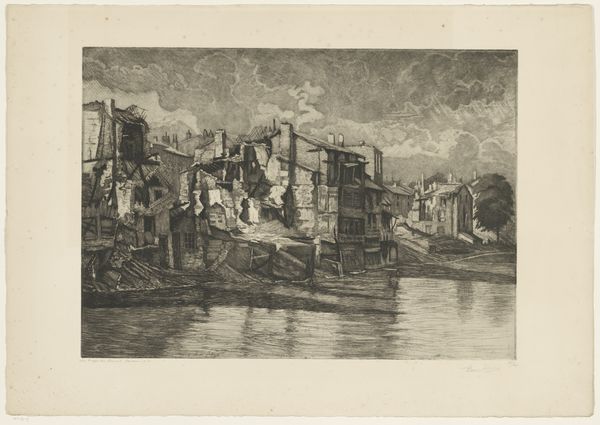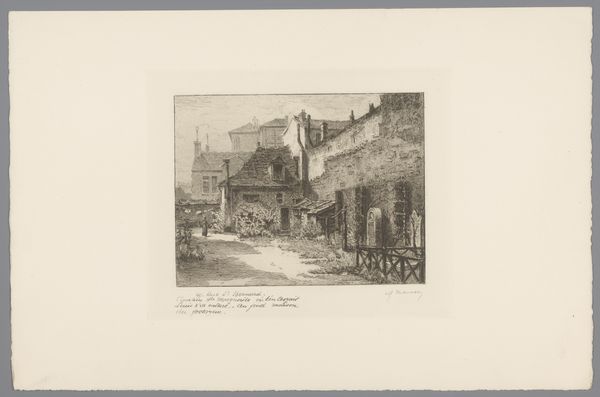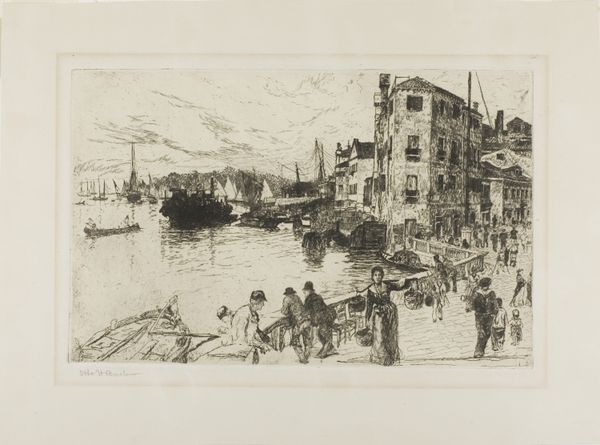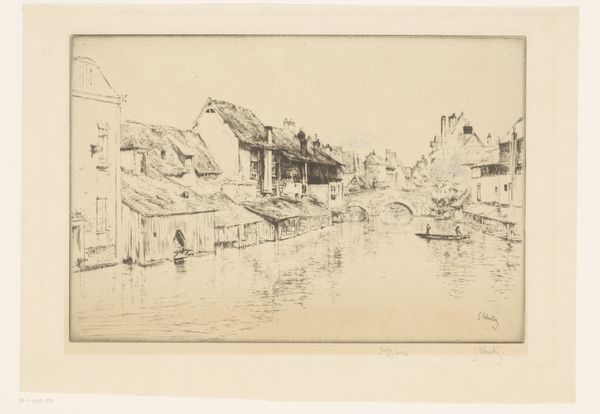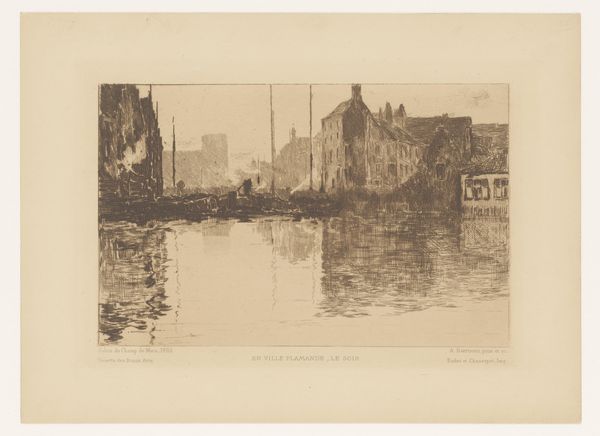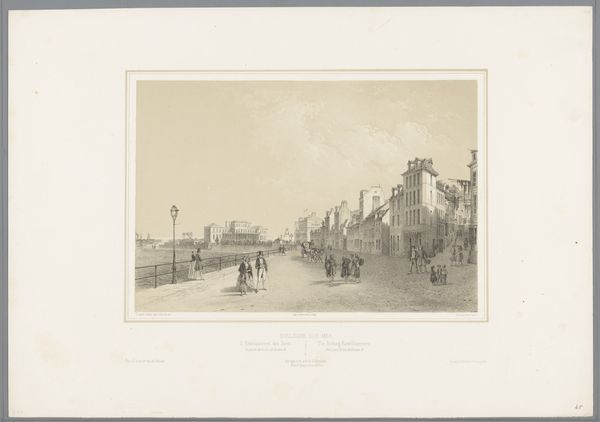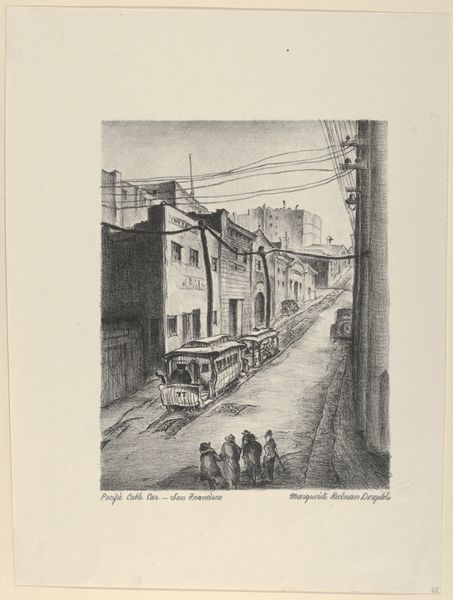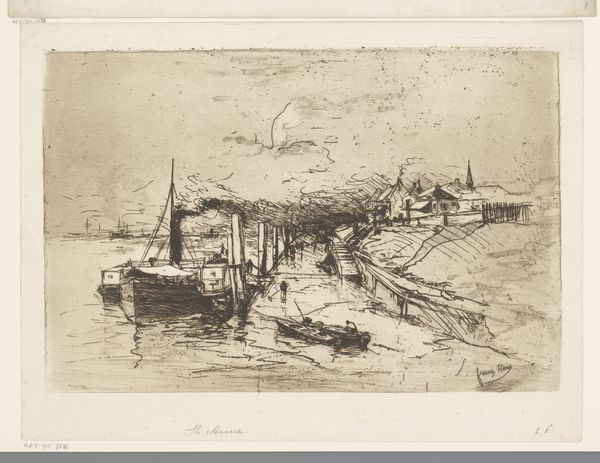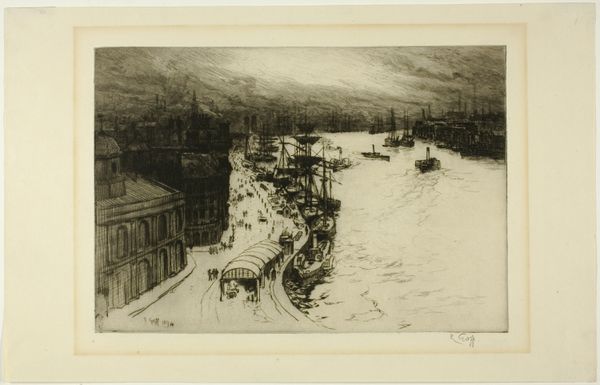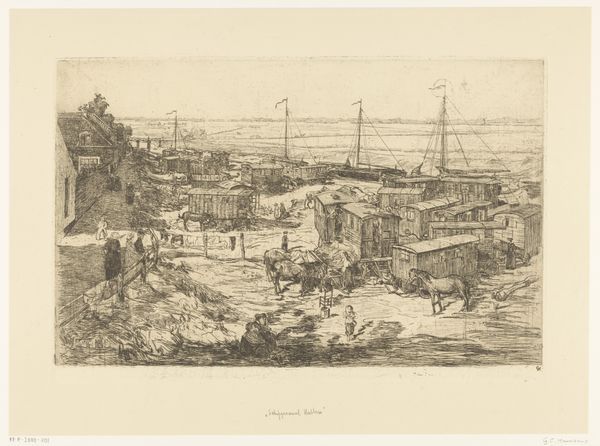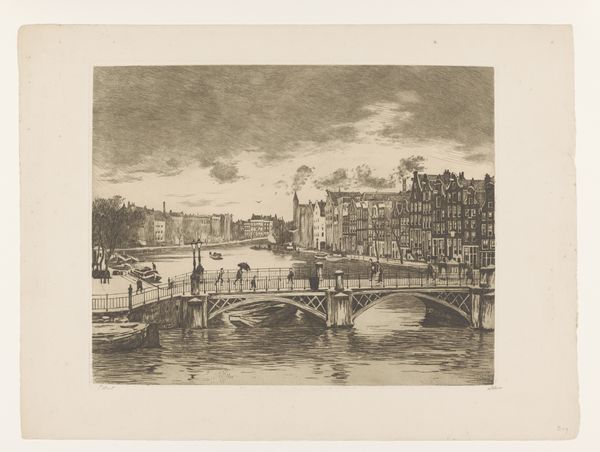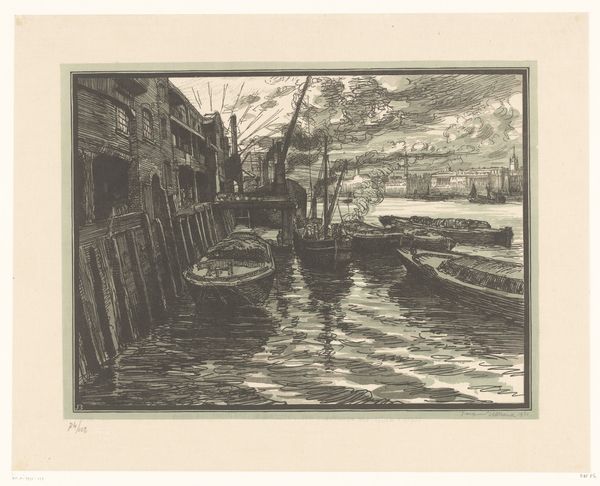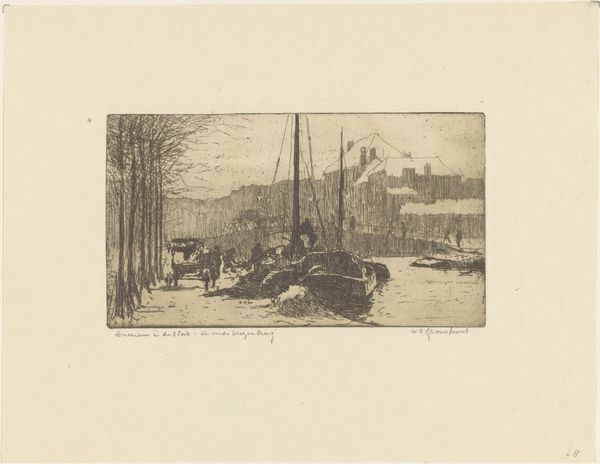
print, etching
# print
#
impressionism
#
etching
#
cityscape
Dimensions: height 237 mm, width 319 mm
Copyright: Rijks Museum: Open Domain
Curator: Immediately, I'm struck by the sheer grayness. It's so atmospheric; almost oppressive. Editor: Here we have Félix Hilaire Buhot’s 1877 etching, "Straatgezicht in de regen," or "Street Scene in the Rain," housed at the Rijksmuseum. Buhot captures a Parisian street on a rainy day, embracing both realism and impressionism in his style. Curator: Impressionism, yes, but with such a grounded realism. The detail in the reflections on the wet cobblestones is mesmerizing, it really draws you into the urban experience of the era. There’s almost a dreamlike quality amidst what looks like a chaotic city. Editor: Consider the date; 1877. The image serves as a commentary on the rapidly changing urban landscape of Paris during the late 19th century, the transformations reshaping its identity. You get a strong sense of how class and social standing defined experiences of public spaces. Curator: That's so relevant! Think of the horse-drawn carriages—clear markers of bourgeois mobility set against the backdrop of dense buildings, perhaps hinting at working-class neighborhoods beyond the frame. Even the weather is an intersectional force; everyone is equally vulnerable in the rain, and that can bring people together in unique ways. Editor: The formal composition utilizes horizontal lines of buildings, railway tracks and carriages that creates a sense of perspective, but then the verticality of the falling rain disrupt any clear geometric reading of the picture plane, leading the eye instead in every possible direction! Buhot cleverly utilizes the printmaking medium to mimic a dreary, wet day, I’m almost feeling the drizzle! Curator: I appreciate how you identify these tensions playing out, a balance between control and fluidity mirroring social realities of this time. Buhot’s print speaks volumes about life in a transitional period, while still appealing to our modern sensibilities and aesthetic understanding. Editor: Exactly! This image provides ample insight into not only art practices of the 1870s, but on how those visual methods can be powerful in critiquing socio-political narratives of history as well as informing our present understandings.
Comments
No comments
Be the first to comment and join the conversation on the ultimate creative platform.
